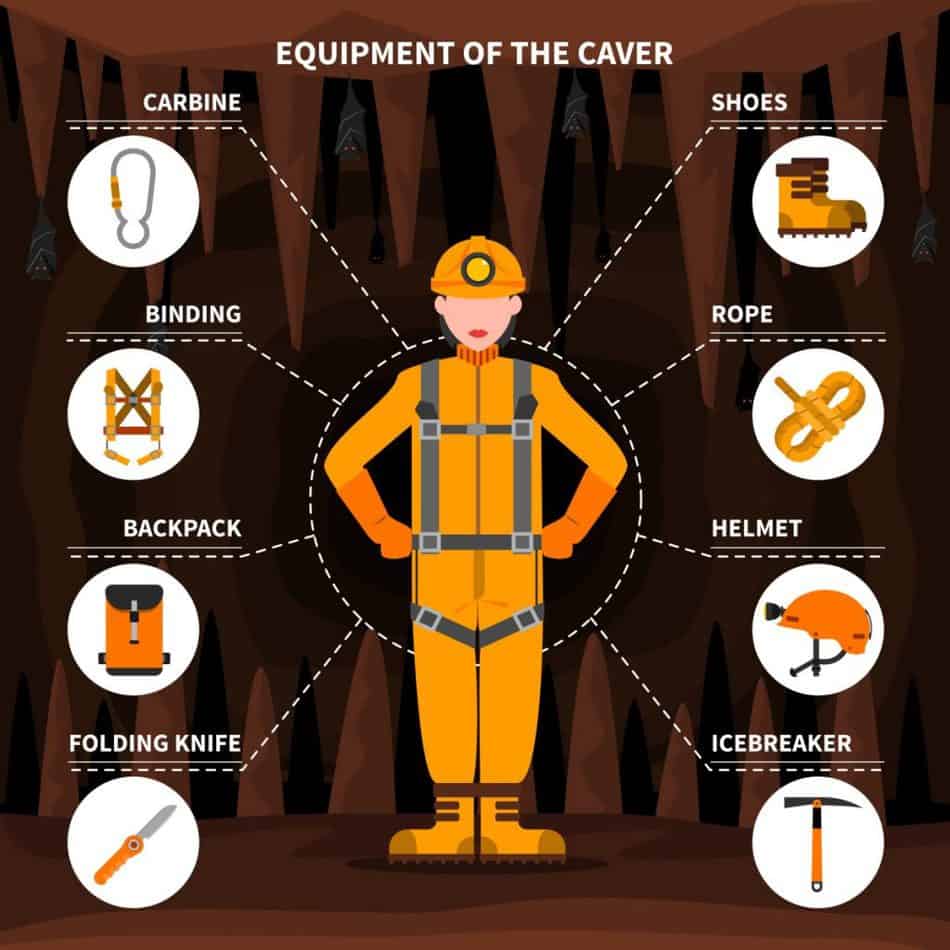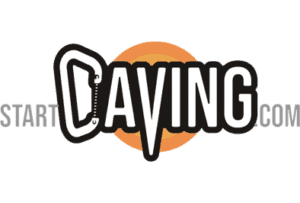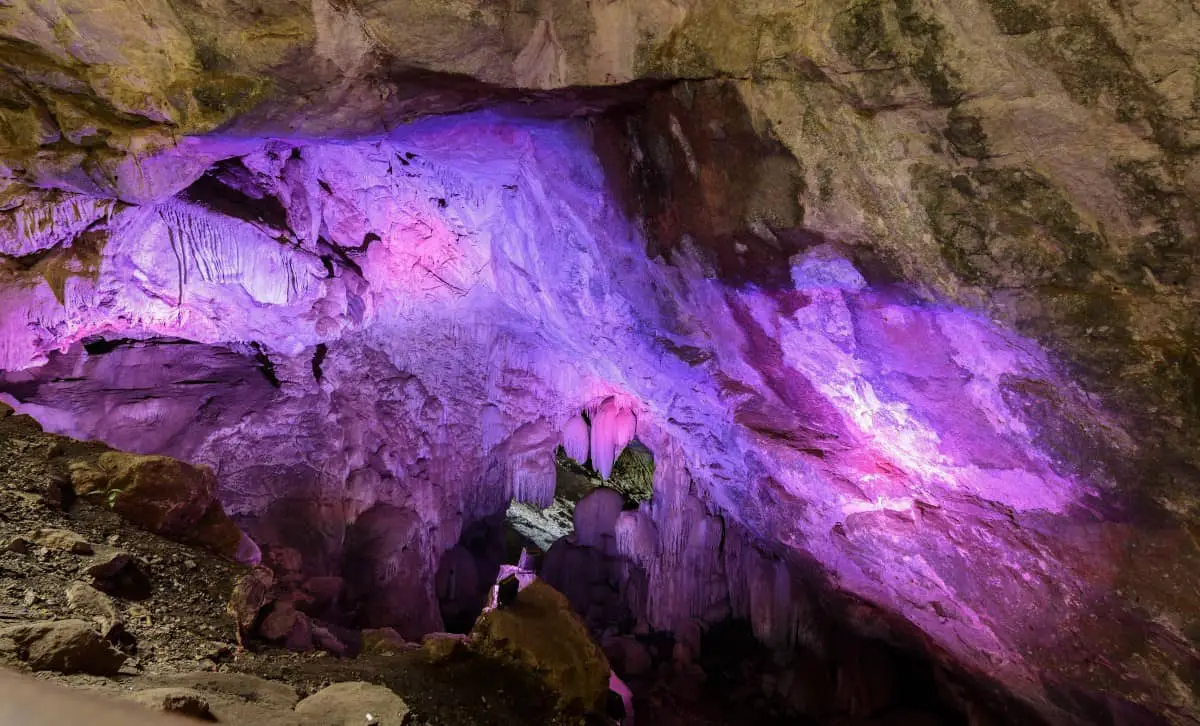When you think of India, its rich heritage and amazing cuisine likely come to mind. But when you think of India, there’s another hugely intriguing aspect you’re missing – and that’s the large number of different caves the country is home to.
How many caves are there in India? India is home to approximately 2,702 caves. However, because India is such a large country, and because some cave systems are still partially or fully unexplored, it’s tough to put an exact number on just how many caves the country has.
India has a lot of caves, and you’ll likely be intrigued by every single one of them. To help you understand India’s large array of caves, we’ll walk you through just how many there are, what they’re called, and what characteristics they have.
How Many Caves Are There in India?
India is home to approximately 2,702 caves and counting. But since some cave systems have not been fully explored, there are likely even more caves in India than the approximate 2,702 we know about.
The thousands of caves in India may be independent, in groups, or part of very large cave systems, and they are often different than what we consider to be “traditional,” naturally-occurring caves.
What Makes a Cave?
Numbers aside, India may challenge your idea of what a “cave” really is.
When you think of a cave, your mind probably pictures a large, dark hole or chamber that has been naturally formed by the environment.
While naturally-occurring caves are commonly found in India, and there are many of them, India also has a vast amount of caves you might not consider caves.
These caves found in India are sometimes called artificial caves, but are most commonly called rock-cut caves or rock-cut architecture. Rock-cut caves are caves that have been designed and created by man rather than nature.
According to an article on Indian rock-cut architecture by the New World Encyclopedia, the rock-cut architecture found in India is primarily religious in nature. In Indian culture and history, caves have long been considered sacred places.
Because of the sanctity of India’s caves, many of the rock-cut architecture and structures created out of rock were built into Temples and other places of worship.
These rock-cut architectural structures are still referred to as caves, although they may resemble architecture that includes worship halls, stone columns, stairs, paintings, sculptures, and even abodes.
Breakdown of Caves in India
While there are approximately 2,702 caves in India, there are different numbers of them spread through different areas and cave systems. For example, there are 6 Badami Caves, but there are 109 caves at Kanheri.
So, what are the caves and cave systems called? How many caves do they each have? What types of caves are they – natural, or rock-cut?

Browse through the table below for a complete breakdown.
| Cave or Cave System Name | Number of Caves | Characteristics / Type | Coordinates |
| Ajanta Caves | Approximately 30 | Rock-cut monasteries and temples | 20.5519° N, 75.7033° E |
| Amarnath Cave | 1 | Natural cave | 34.2157° N, 75.5041° E |
| Badami Caves | 6 | Rock-cut cave temples | 15.9167° N, 75.6910° E |
| Bagh Caves | 9 | Rock-cut monuments and monasteries | 22.3236° N, 74.8055° E |
| Barabar Hill Caves | 7 | Rock-cut caves | 25.005° N, 85.063° E |
| Belum Caves | 1 cave with several chambers | Natural cave | 15.1026° N, 78.1115° E |
| Borra Caves | 1 cave with several chambers | Natural cave | 18.2807° N, 83.0397° E |
| Caves of Meghalaya | About 1,700 total caves; about 980 caves partially or fully explored | Natural caves | 25.4670° N, 91.3662° E |
| Edakkal Caves | 2 | Naturally formed prehistoric rock shelters | 11.6268° N, 76.2343° E |
| Elephanta Caves | 1 | Rock-cut caves | 18.9633° N, 72.9315° E |
| Ellora Caves | 34 | Rock-cut monasteries and temples | 20.0258° N, 75.1780° E |
| Guntupalli Caves | Group of Buddhist monuments | Rock-cut monuments and temples | 17.0188° N, 81.1305° E |
| Jogeshwari Caves | 3 | Rock-cut temples | 19.1389° N, 72.8581° E |
| Kanheri Caves | 109 | Cluster of rock-cut monuments and temples | 19.2059° N, 72.9069° E |
| Karla Caves | 15 | Rock-cut caves and shrines | 18.7833° N, 73.4704° E |
| Kotumsar Cave | 1 | Natural cave | 18.0520° N, 81.0560° E |
| Lakhudiyar Cave | 1 | Natural cave and rock shelter | 29.3832° N, 79.4451° E |
| Lenyadri | 30 | Rock-cut Buddhist caves | 19.2434° N, 73.8874° E |
| Mahakali Caves | 19 | Rock-cut Buddhist caves and monuments | 19.1301° N, 72.8732° E |
| Moghalrajpuram Caves | 3 | Rock-cut caves and sanctuaries | 16.5062° N, 80.6468° E |
| Nagarjuni Hill Caves (Barabar) | 3 | Rock-cut caves and monuments | 25.0091° N, 85.0784° E |
| Nasik Caves (Pandav Caves) | 24 | Rock-cut caves | 19.9412° N, 73.7486° E |
| Robbers Cave | 1 | Natural cave | 34.9970° N, 95.3304° W |
| Rock Shelters of Bhimbetka | 700 rock shelters | Rock-cut shelters | 22.9395° N, 77.6124° E |
| Undavalli Caves | Several structures | Rock-cut temples; some four stories tall | 16.4967° N, 80.5816° E |
| Varaha Cave Temple | 1 | Rock-cut temple | 12.6181° N, 80.1923° E |
Notable Caves in India

While all the caves in India are arguably notable and interesting, some Indian caves are truly one of a kind.
What are they? Why are they so especially notable? Let’s take a look.
Caves of Meghalaya
You probably remember the Caves of Meghalaya because of the major amount of caves the system encompasses.
There are approximately 1700 caves in the Meghalaya system. Over 980 of those caves have been explored or partially explored, leaving 720 caves that have yet to be explored at all.
While the sheer number of caves at Meghalaya makes them extremely notable, that’s not all that the Caves of Meghalaya have to offer.
The Meghalaya cave system is home to the world’s longest sandstone cave, Krem Puri. Krem Puri is 24,583 meters long – which is about 80,652 feet, and approximately 15 miles.
According to an article about Krem Puri by David Laitphland for the Hindustan Times, Krem Puri and its astonishing length even contain fossils from dinosaurs – particularly the Mosasaurus, a carnivore that lived nearly 62 million years ago.
The Caves of Meghalaya are also home to Siju Cave, which is famous for its stalagmites, stalactites, and limestone formations.
Ajanta Caves
The Ajanta Caves, the first in our table above, are another notable cluster of caves in India. They’re so notable, in fact, that they’ve been deemed a UNESCO World Heritage Site.
The 30 Ajanta Caves were constructed over a span of 800 years and feature some of India’s most celebrated and historic art.
According to Ancient History Encyclopedia, the caves of Ajanta feature ancient paintings, murals, sculptures, and architectural motifs in rock-cut temples and monasteries that date back as far as the first century BCE
Take Cave 9, for example, which was excavated in the first century BCE. Cave 9 features paintings from both the first century BCE when it was originally excavated, and the fifth century BCE when repainting was done.
The paintings and art at the Ajanta Caves are some of India’s earliest art, and some people have even regarded them as “the birth of Indian art.”

Kailasa Cave
Kailasa Cave is part of the Ellora Caves, which is a series of 34 rock-cut monasteries and temples. The Ellora Caves have also been named a UNESCO World Heritage Site.
Kailasa Cave, or Kailasa Temple, is extremely intriguing and notable in several ways.
First, Kailasa Temple is the largest monolithic building in the world. The entire rock-cut temple was carved from one piece of stone!
Further, according to Encyclopedia Britannica, Kailasa Temple was built by King Krishna I, a ruler of the Rashtrakuta Dynasty, who reigned from 756 to 773 CE.
It is estimated that approximately 200,000 tons of rock were removed during the construction of the Kailasa Temple. To make that number even more impressive, the entire Kailasa Temple was created using only hammers and chisels.
Final Thoughts
While there are approximately 2,702 Indian caves we know about, there are likely even more caves in India – some cave systems are still not completely explored, and it’s thought that some cave systems have yet to be discovered.
Many of India’s caves might challenge everything you think you know about caves – hundreds and even thousands of them were rock-cut by man. When it comes to caves, India truly has it all – and who knows what is yet to be discovered.

When you’re ready to get started caving, be sure to read my Beginners Guide and check out my recommended gear section.

